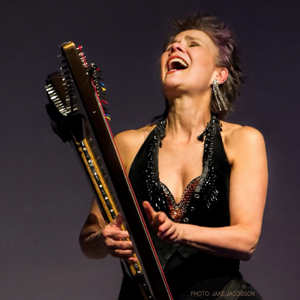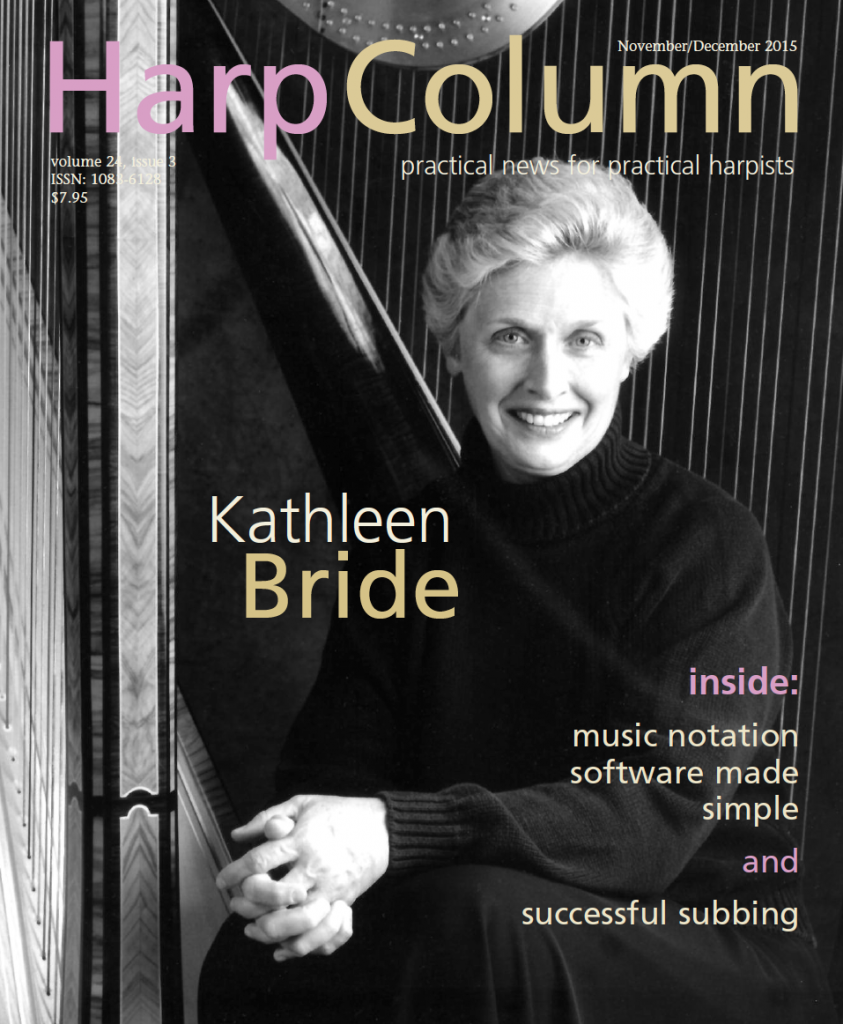We spend our lives playing the harp. But what does it mean to really play?
I’m constantly having this discussion with my friends and colleagues, searching to define it, looking for the words. Then I blurted it out in conversation with a friend, “It’s the difference between handing someone a sheet of music and saying play this, and handing someone a sheet of music and saying play with this.”
The word “with,” I realized, is the word of human experience, of play, of connection. With power. With conviction. With love. With passion. With fun. With you. With!
Play with this
Years ago I noticed I’d feel alienated and depressed after some shows and elated after others, and after months I finally realized that when the lights were so bright that I couldn’t see the audience, I felt isolated and disconnected. But when I could truly connect, eye to eye, I felt as if I came away from the show with more than when I started.
I’d been able to play with the audience.
I’m constantly searching for how to play with my life, my work, my challenges. I struggle to find a sense of play every day as a creative entrepreneur. I experience performance anxiety about Facebook, the way many musicians describe the anxiety of performing on stage.
So how do we learn to play with, when we’re stuck in the handcuffs of thinking we need to do something “right?” When we’re scared of exposing ourselves? How do we make that shift from the anxiety of trying to “do it right” to the freedom to simply play with it?
For me it becomes play when I know what I’m playing with. When I understand how it’s put together—its structure—then I can have fun.
Embracing your musical endoskeleton
One of the first things I say, any time I’m teaching or coaching creativity, is that “structure is the foundation of creative freedom.” More specifically, I mean internal structure, like the endoskeleton that mammals and reptiles have or the frame of a building.
When you understand an internal structure, you can build anything onto it and the structure doesn’t constrain what you build, it just provides the support.
When I lack that simple understanding of the internal structure I get tripped up by the details. I noticed this as a coach when students first started coming to me for intensive jazz studies.
The fancy parts of jazz are the stylistic elements: the extended harmonies and syncopated rhythms. Those are the things that make you sound impressive. But those are the things that take so much mental coordination that, until you’ve internalized them, they just create a kind of musical stuttering. You have to think so hard about them that you can’t possibly engage in the play of playing.
So instead I focused on the simple internal game of jazz, the form you play with, without the things that make jazz “jazzy.”
See, in their most basic form, jazz and classical music have the same structure, the same game board, the same simple blueprint or skeleton. Each has three basic parts. In classical music they’re called exposition, development, and recapitulation. In jazz they call it head, blowing, and out-head.
But it is really just the same thing, the skeleton of an experience: You start at home, you go on an adventure and you come back home. When you return, the journey has changed your experience of home.
What could be simpler? Or more powerful? Or more human? It’s like life, and life is what we’ve been given to play with.
So why is this important to me right now? Aside from the fact that knowing the simple three-part structure allows me to truly play with music, I love the idea of the journey. This is the last article in this series about reinvention, and I want to experience it like a musical journey. There have been times when I’ve struggled over the writing, and times when it’s flowed. Times when I feel like I’m really connecting to you, the reader, and times when I can’t seem to get out of my own way. Times when I’m trying to do it “right” and times when I’ve really felt like I was playing.
What I love about this is that we are all searching for the freedom of play, and we’re sharing that, each in our imperfect ways. We’re sharing a piece of the puzzle, adding a note of the harmony about what it means to be human. And each time we share our personal sense of play we’re creating a richer resonance to that music, and to the music of our community as harp players, each with our instruments, playing our lives with this marvelous instrument that we call home. •







